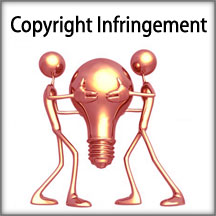Trademark Infringement
Trademark infringement claims are progressively normal. This
article describes the eight variables courts use to decide if one substance has
infringed on the sign of another. Australian trademark assurance is allowed to
the main substance to use a specific stamp in the geographic zone where it
works, paying little mind to whether the check is enrolled.
Regardless of whether infringement has happened pivots upon
the probability of perplexity by buyers of the trademarks at issue
The Infringement court Melbourne has
depicted the fundamental targets of trademark law as takes after:
"trademark law, by keeping others from replicating a source-recognizing
mark, 'reduce[s] the client's expenses of shopping and settling on buying
choices,' for it rapidly and effortlessly guarantees a potential client that
the thing with trademark is made by an indistinguishable maker from other
comparably stamped things that he or she enjoyed before. In the meantime, the
law guarantees a maker that it will harvest the money related and notoriety
related prizes related to an alluring product.
"
To build up a trademark infringement guarantee or an out of
line rivalry claim a business must demonstrate that another element is using a
check confusingly like a legitimate, protectable trademark
Enrolling a trademark on the Main Enlist in the Patent and
Trademark Office constitutes by all appearances confirmation of the legitimacy
of the enrolled stamp and of offended parties restrictive appropriate to use
the blemish on the products and enterprises indicated in the enlistment. A
gathering can invalidate the assumption that the enlisted trademark is
substantial and that registrant is qualified for select use of stamp by demonstrating
that it was the gathering which initially used the check, not the registrant.
This is genuine on the grounds that a central principle of trademark law is
that responsibility for the innately
unmistakable check is represented by the need
of use.
Courts seek eight key variables for direction in deciding
the probability of perplexity
In deciding the probability of perplexity in trademark
infringement activities the Infringement court Melbourne look to
these eight factors: the similitude of the clashing assignments; the
relatedness or nearness of the two companies' products or services; quality of
the offended party's check; showcasing channels used; the level of care liable
to be practiced by buyers in choosing merchandise; the respondent's aim in
choosing its stamp; confirmation of genuine disarray; and the probability of
extension in product offerings.
A few components are substantially more imperative than
others, and the relative significance of every person factor will be
case-particular. A portion of the components pertinent to deciding the
probability of perplexity will dependably be vital, for example, the likeness
of the imprints and whether the two companies are immediate contenders. Where
the two imprints are altogether unique, there is no probability of disarray.
For instance "Pepsi" does not infringe Coca-Cola's "Coke."


Comments
Post a Comment